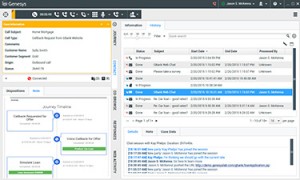It’s finally October, the pumpkin spice lattes are out in force, and Black Friday will be here before you know it. Which is great for most businesses because it means more sales, but also the not-so-great possibility of either under or over-estimating how much inventory to stock up on.
While not as exciting as putting together an advertising budget or coming up with a company re-brand, inventory management is the sort of thing that can make or break your small business — especially headed into the holiday season. If you have a product-oriented business, then you already know how you handle inventory makes a big impact on the bottom line. Too much inventory lying around means tying up capital in the form of increased storage costs and having less inventory of other products. Too little means potentially turning customers away when they find out you’re not carrying the item you’re looking for.
What’s the best course of action? Let’s take a look at some strategies for smarter inventory management for small businesses, and then talk about how to implement them.
Set a Smart Reorder Point
A reorder point is the minimum stock threshold that you never want to cross. Whenever your inventory falls to this number — let’s arbitrarily call it 10% of your total stock — that means it’s time to reorder more. Obviously, a major factor in your decision-making process here is the time it will take for the new products/raw materials (depending on whether you have any part in manufacturing the inventory) to arrive and be restocked. Having a concrete reorder point ultimately protects your business from external shocks that you have less control over, such as a manufacturing breakdown or a freak wave of demand because your product goes viral.
Find a Safety Stock Level That Makes Sense
There’s a bit of crossover between safety stock and reorder points; your reorder point is there to ensure that your safety stock is always accounted for. Basically, the point of safety stock is to create a buffer if and when there’s a supply or demand shock. When the shock inevitably arrives, safety stock ensures that you have enough inventory on hand to meet customer demand and continue to ship out orders on time. When you think about it, it’s a comforting thought: despite the chaos in other parts of your supply chain, or rampant demand, as long as your safety stock is there for you your customers won’t even know any better. They’ll just be happy to receive your product as normal.
Determining Dead Stock
When it comes to dead stock, you have to be willing to cut the cord a bit. Dead stock is a product that hasn’t been sold yet is still stocked in inventory. It happens all the time: you have a product that for whatever reason, hasn’t been a success. It sits on a shelf in your warehouse or brick and mortar store, collecting dust. But it’s not just collecting dust. It’s wasting valuable resources. Instead of holding onto dead stock, you should be filling your limited storage space with inventory that actually moves. The cost of dead stock boils down to losing potential revenue that would come from stocking products that sell.
How to Manage Your Inventory
How do you calculate reorder points, safety stock levels, and dead stock? Having an inventory management software available to handle the workload will help a lot. Besides that, here are three best practices for determining these key metrics:
Consolidate your product portfolio
If you hold your inventory in multiple places — perhaps you have more than one warehouse or location that stores the inventory — it can be tempting to have separate inventory counts. The problem with this is that you open yourself up to the possibility of miscounting and other discrepancies. Consolidate your inventory counts into one file, and account for multiple physical locations within that one document. For example, West Coast inventory SKUs can start with a 1, whereas East Coast SKUs can start with 0.
Make your product descriptions, recipes, and processes as detailed as possible
The more detailed your product descriptions are, the less likely you will be to make careless mistakes related to under or over-ordering supplies. Enter descriptions such as size, color, embellishments, and any other variants that are applicable in your inventory management software.
Make your manufacturing and sourcing processes airtight
If you don’t have a precise idea of which materials arrive from where and how long it takes to source them, now’s the time to start doing better. Track orders from your suppliers so that you know when stock is expected. Entering manufacturing processes and product recipes to better track product flow is a must — if there’s ever a disruption to your supply chain, you’ll want to know what order materials usually arrive in to ensure you are best prepared to find a replacement. Lastly, do periodic blind checks of your inventory to ensure that as orders come in, they are logged accurately in real time.
Takeaways for better inventory management
The more vigilant you are when it comes to managing your inventory, the better prepared you will be should anything go wrong with your process. Keeping track of key variables like smart reorder points or dead stock will help keep your entire supply chain organized and less vulnerable to the sort of shock points that can lead to lost sales, disgruntled customers, or both. If you haven’t done this before, it will take some time to get it right the first time, but having a smooth process will save you exponentially more time and capital once the Black Friday rush comes.
Business & Finance Articles on Business 2 Community
(13)





